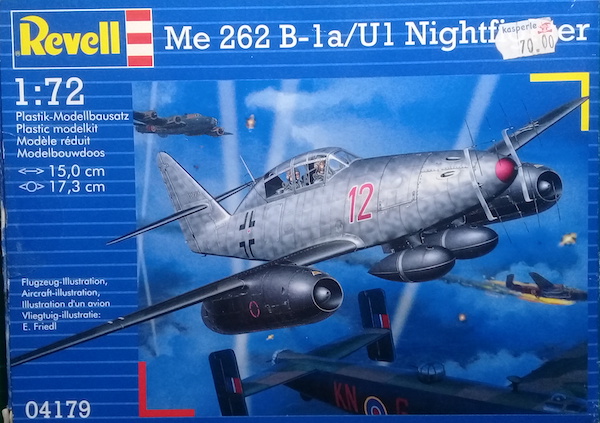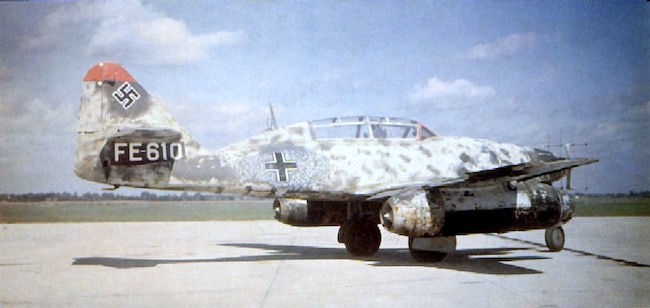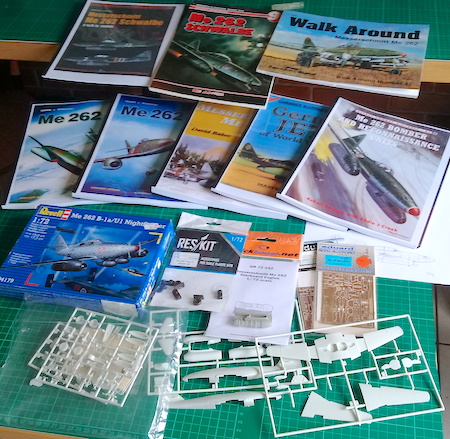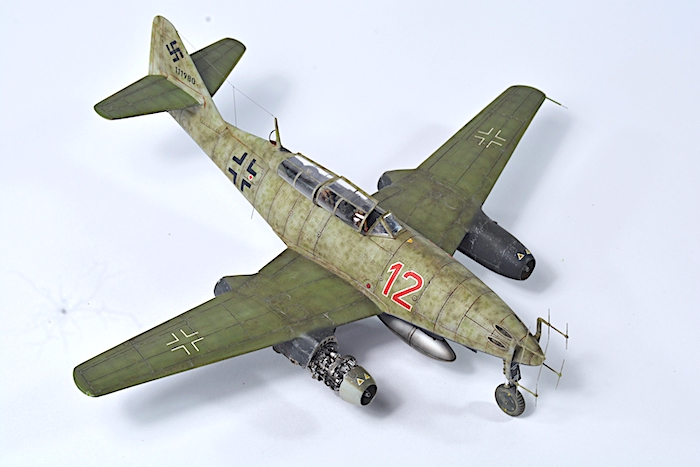
Feature Article with Ricardo Barrientos
Hello again from Guatemala!
This is the third and last of a series of three full in-depth articles on my latest project, three Luftwaffe jets: the Ho 229, the He 162 and the night fighter version of the Me 262. This is the Messerschmitt Me 262 B1a/U1, Werknummer 111980, “Red 12”, 10./NJG 11, Sonderkommando Welter’s Nacht Moskitojägger (night mosquito hunters), as it was leaded by Oblt. Kurt Welter. This plane probably was piloted by Welter himself, Ofw. Kurt Lamm or Lt. Herbert Altner, but the latest references suggest that it never flew combat missions in anger. Also, this particular example was one of the four two seaters equipped with FuG 218 “Neptun” airborne radar, captured by British forces in May 1945 at Schleswig-Jagel airfield, in Germany.

The kit is 1:72, the 2009 Revell re-box of the original 1998 tool, a fairly good kit for the scale. “Red 12” is the version provided in the kit, but you have to be careful because, as is the case in many kits in different scales for this particular subject, the colour scheme suggested is wrong.
Camouflage patterns and colours of the Me 262 night Moskitojäggers are quite complicated, entertaining or passionate, you decide, a topic, as I have found, strongly debated among experts and specialists. References explain that all four radar equipped Me 262´s of NJG 11 captured by the allied wore different camouflage schemes. These Moskitojägger were specially adapted in January 1945 at a Lufthansa facility in Staaken, near Berlin, and three of them received top surfaces camouflage designed to conceal the aircrafts during day from allied fighters constantly looking for targets of opportunity, being W.Nr. 110635 “Red 10” the exception, as its top surfaces received “standard” night fighter camouflage, while the under surfaces of all four aircraft were black as a night camouflage. Of all this, what is clear is that, contrary to the kit’s instructions, “Red 12” didn’t have a RLM 81/ RLM 82 splinter camouflage pattern on top of the wings and horizontal stabilizers, but a single green (probably RLM 82). The fuselage mottled camouflage is subject of stiff debate, being different in the four aircraft, and the most studied is W.Nr. 111305 “Red 8”, which wore an unusual pattern, consisting in a light grey base (probably RLM 76), sprayed with thinned green or RLM 02, and then mottles in two greens (probably RLM 81 and RLM 82). If all this wasn’t complicated enough, the fuselage mottled camouflage was different in both sides, suggesting the planes were painted by two persons with their particular “style”. Such were the conditions in Germany, at the end of World War Two.
For those of us who enjoy the research for a kit, this is pure fun. But, as usually happens for late war Luftwaffe aircraft, there is no definitive and final word on camouflage and colours, so no matter how much research is done, some interpretation must be done. So, I’ll make some remarks when something is clearly supported by a reference, and when it is my interpretation. I’m using several and diverse printed and online references, because, there are plenty of them! As I already said, pure fun!

Now, just before we get started, here’s a look at how it all turned out…
